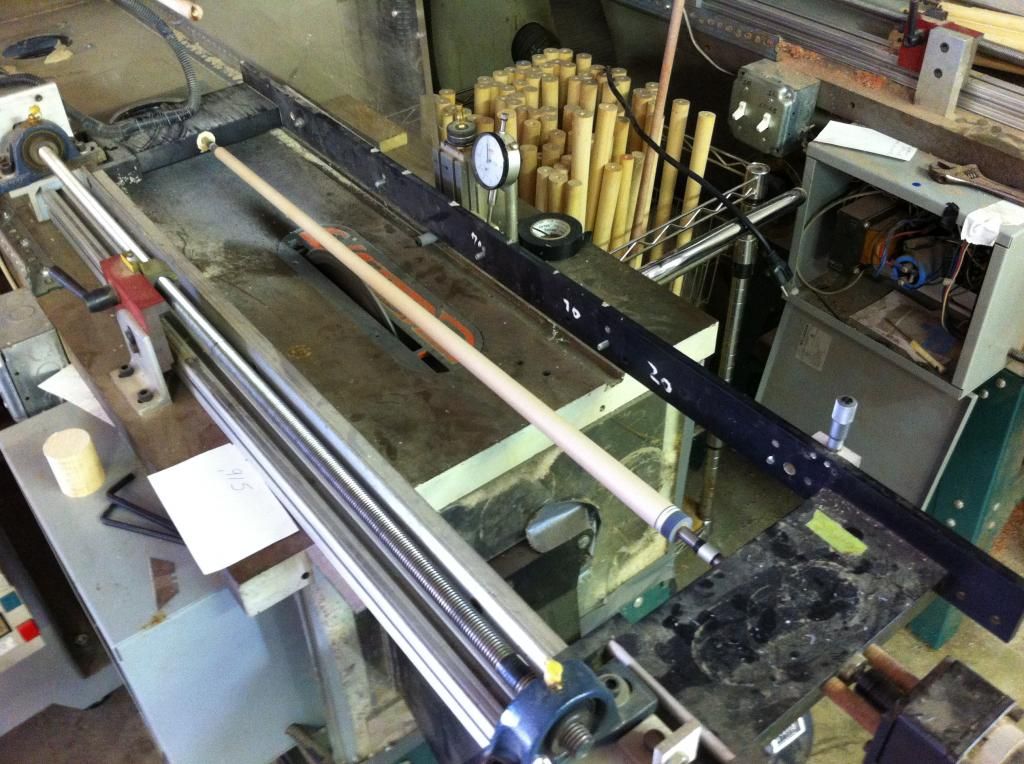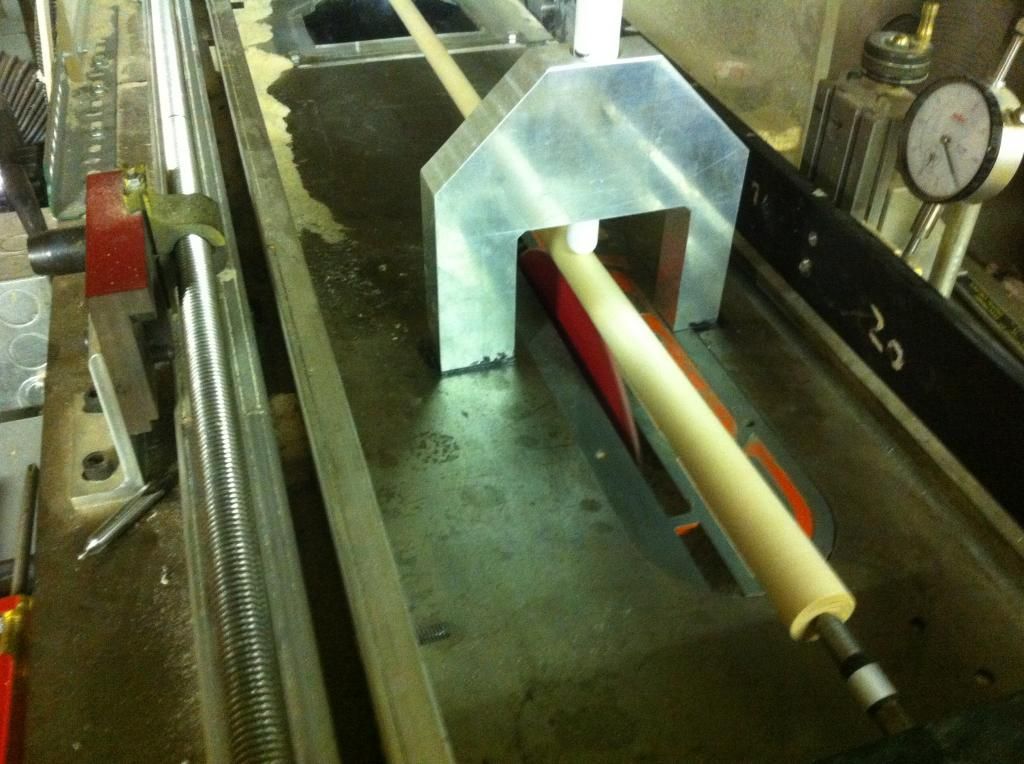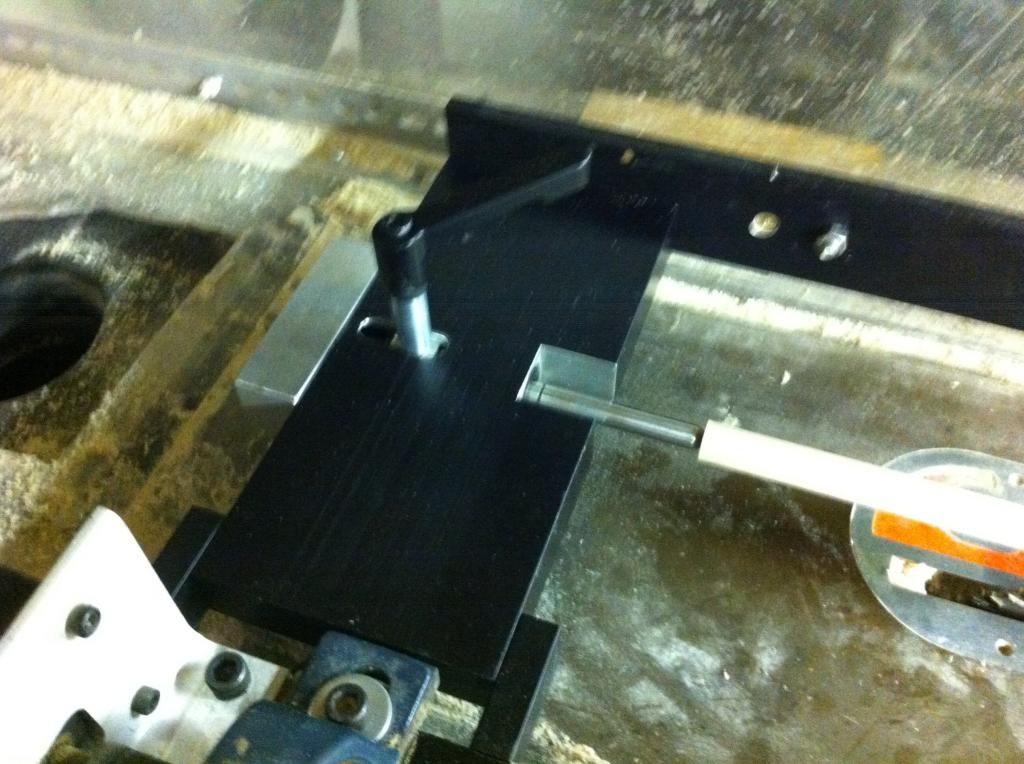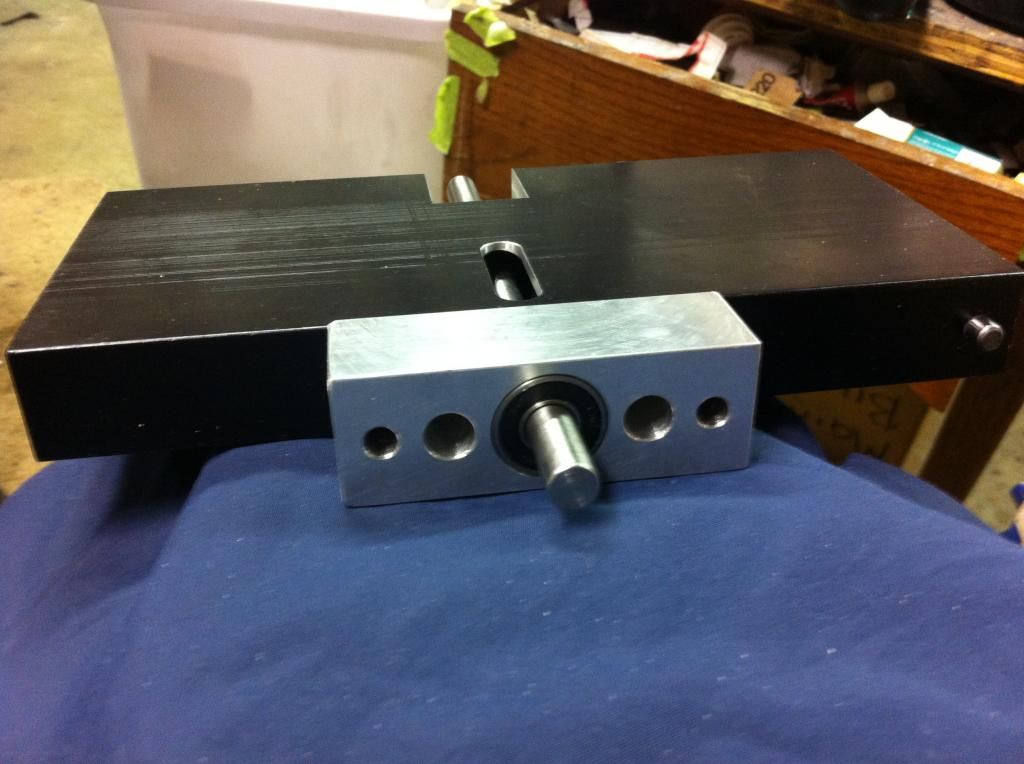Hi All,
I had tried 4 different shaft tapering set up including my CNC with many cutters and speed / feed set ups looking to create a the best shaft RMS finish possible. When I was using my CNC I only had a three wing set up and wished I had tried a six wing. I went with a saw machine and am very happy today. Whatever cutter you use there are many factors that can be tweaked or examined to reduce the barber polling and other things that effect your shaft machining finish.
For the last 7 years I have used a dedicated table saw machine set up and have made many incremental design modification improvements. They are not exclusive to a table saw set up and can apply for your set ups as well. Today I use an 80 tooth Freud Triple Chip Blade custom ground to a flat top grind configuration. Six wings on a router can deliver even more machine touches per minute depending on the router. I also added a vernier controlled spring loaded device to my tail stock so I can attain the lightest pressure between center possible with a repeatable outcome every time. Today my feeds and speeds are 7 min travel and 135 rpm rotation. I added a gravity follow rest with a 26 gram loaded Teflon bullet that rides the contour on top of the shaft incurring the pressure required for harmony of the physical variables. This configuration eliminates any oscillation that occurs and the frequency or audible sound is a singular perfect pitch on each cut.
It took me over 10 years to get to the point where I am delighted with every shaft and can sleep good at night not thinking about why certain shafts came out very good while others wiggled in the middle at 1500 rpm in my wood lathe after the final cut. With my fully evolved set up, they are all the same and the sanding is done by hand north and south with out spinning in about a minute before sealing.
It is my philosophy that the shaft is the singular most important element of a cue and I view shaft build like a religious experience. In the end what ever effort you can make to improve you shafts by even 1/2 of 1 percent is worth the effort of time and money spent to that end.
The six wing cutter balanced and using the appropriate parameters in the set up and operation can reach shaft nirvana IMO but the devil is in always in the details. The more you work at it the better your shafts can be.
After reading this thread, my only opinion is that however you cut your shaft I think you will get the best performance at a very slow travel with a minimum with no faster than 1" travel in twenty seconds. Then play with your lathe speed to find what works best for you and never take less than a .010 kerf cut. If you have a lathe you are doing shafts on that won't go that slow on the travel speed, your never going to reach shaft nirvana IMHO. Speed Kills LOL!
JMO,
Rick
I had tried 4 different shaft tapering set up including my CNC with many cutters and speed / feed set ups looking to create a the best shaft RMS finish possible. When I was using my CNC I only had a three wing set up and wished I had tried a six wing. I went with a saw machine and am very happy today. Whatever cutter you use there are many factors that can be tweaked or examined to reduce the barber polling and other things that effect your shaft machining finish.
For the last 7 years I have used a dedicated table saw machine set up and have made many incremental design modification improvements. They are not exclusive to a table saw set up and can apply for your set ups as well. Today I use an 80 tooth Freud Triple Chip Blade custom ground to a flat top grind configuration. Six wings on a router can deliver even more machine touches per minute depending on the router. I also added a vernier controlled spring loaded device to my tail stock so I can attain the lightest pressure between center possible with a repeatable outcome every time. Today my feeds and speeds are 7 min travel and 135 rpm rotation. I added a gravity follow rest with a 26 gram loaded Teflon bullet that rides the contour on top of the shaft incurring the pressure required for harmony of the physical variables. This configuration eliminates any oscillation that occurs and the frequency or audible sound is a singular perfect pitch on each cut.
It took me over 10 years to get to the point where I am delighted with every shaft and can sleep good at night not thinking about why certain shafts came out very good while others wiggled in the middle at 1500 rpm in my wood lathe after the final cut. With my fully evolved set up, they are all the same and the sanding is done by hand north and south with out spinning in about a minute before sealing.
It is my philosophy that the shaft is the singular most important element of a cue and I view shaft build like a religious experience. In the end what ever effort you can make to improve you shafts by even 1/2 of 1 percent is worth the effort of time and money spent to that end.
The six wing cutter balanced and using the appropriate parameters in the set up and operation can reach shaft nirvana IMO but the devil is in always in the details. The more you work at it the better your shafts can be.
After reading this thread, my only opinion is that however you cut your shaft I think you will get the best performance at a very slow travel with a minimum with no faster than 1" travel in twenty seconds. Then play with your lathe speed to find what works best for you and never take less than a .010 kerf cut. If you have a lathe you are doing shafts on that won't go that slow on the travel speed, your never going to reach shaft nirvana IMHO. Speed Kills LOL!
JMO,
Rick
Last edited:



